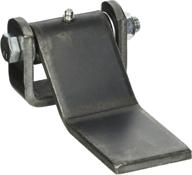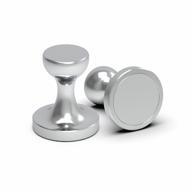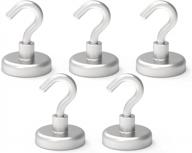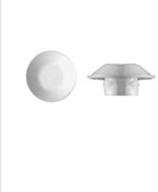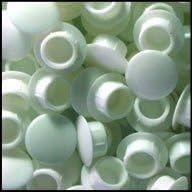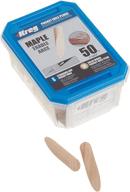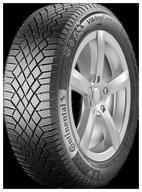Top products in 🔩 Hinges
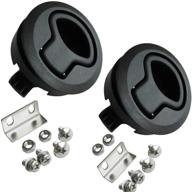

3 Review



3 Review

Continuous Hinges
Continuous hinges, also known as piano hinges, are a type of hinge used for doors, gates, and other applications where a long, uninterrupted hinge is desirable. Unlike standard butt hinges which are attached at top and bottom of a door, continuous hinges employ a long striplike design that distributes the weight evenly along the entire length of the door or gate.
Similar products
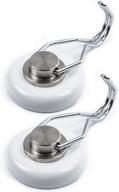

35 Review

Benefits of Continuous Hinges
- Even weight distribution - Less stress on individual hinge points compared to multiple butt hinges
- Aesthetics - Provide a clean, seamless look since no interruptions along hinge side
- Security - Harder to force open since force is distributed along entire hinge
- Ease of installation - Requires less precise measurements compared to multiple hinges
Types of Continuous Hinges
There are several types of continuous hinges designed for different applications:
Standard Continuous Hinges
- For medium weight doors and gates
- Typically 0.062-0.125 inches thick
- Common lengths are 48, 60, 72, 84, and 96 inches
- Often have holes pre-punched for screws
Heavy Duty Continuous Hinges
- For heavy, oversized, or high-traffic doors
- Up to 0.180 inches thick
- Have extra machine screws for added strength
- Common in commercial buildings
Decorative Continuous Hinges
- Designed for visible applications where style is important
- Come in brass, bronze and other designs
- Used on gates, cabinets, and exterior doors
| Continuous Hinge Types | Common Uses |
|---|---|
| Standard | Interior doors, RV compartment doors, truck caps |
| Heavy Duty | Commercial steel doors, security gates, fire doors |
| Decorative | Front entry doors, gates, accent cabinets |
Installation Tips
To properly install continuous hinges:
- Hold hinge along edge of door and mark for screw holes
- Drill pilot holes for each screw to prevent splitting wood
- Use all fasteners provided with hinge kit
- For cabinets and decorative uses, install hinge cups first then fasten hinge
- Adjust door alignment if necessary after installing hinge
With their ease of installation and added strength, continuous hinges are a great choice for many applications where a full length hinge is desired. They distribute stress evenly, provide a seamless look, and add security to doors and gates.
Concealed Hinges
Concealed hinges, also called cup hinges, are a modern hinge design that hides the hinge hardware for a smooth, streamlined appearance on cabinets and furniture. The hinge cups are recessed into the door and frame, leaving only the knuckles exposed.
Benefits of Concealed Hinges
- Clean, integrated look - Only the hinge knuckle is visible when the cabinet is closed
- Adjustability - Many models allow adjustments like depth, side to side, and door angle
- Durability - Made from sturdy steel with options like self-closing and soft-close
- Variety - Available in different styles and finishes to match cabinetry
Types of Concealed Hinges
There are several varieties of concealed hinges:
Standard Concealed Hinges
- Simple design with adjustable screw mounts
- Come in standard and heavy duty for different door weights
- Typically used on residential kitchen cabinets
Full Overlay Hinges
- Mount so door covers the frame and cabinet face
- Provide a full access opening when opened
- No cabinet frame exposed when closed
Half Overlay Hinges
- Mount so door partially covers cabinet frame
- Allow some cabinet frame to show
- Used when cabinet face is decorative
Self-Closing Hinges
- Have spring mechanism that pulls door closed
- Help keep cabinets neatly closed
- Reduce hazard of doors left open
| Concealed Hinge Types | Typical Uses |
|---|---|
| Standard | Residential kitchens, bath vanities |
| Full Overlay | Modern style cabinets |
| Half Overlay | Transitional style cabinets |
| Self-Closing | Cabinets needing self-close function |
Installation Tips
To install concealed hinges:
- Use manufacturer's template and tools for ideal fit
- Follow their instructions for cup placement and depth
- Allow proper clearance so door can open freely
- Check alignment and make adjustments as needed
- Ensure screws are tightened securely
With their versatility and sleek appearance, concealed hinges are a handy option for many cabinet projects. Their adjustable design makes it easy to get a perfect door fit.
Another interesting products
How to Choose the Right Hinge
Selecting the correct hinge is important for proper door function and long-term durability. Here are key factors to consider when deciding which type of hinge to use for a project:
Application
Where will the hinge be used? Options include:
- Interior doors - butt hinges or continuous hinges
- Exterior doors - heavy duty hinges with non-corrosive finish
- Cabinets and furniture - concealed or specialty hinges
- Gates and outdoor structures - strap hinges or heavy duty continuous hinges
Door Material and Weight
Hinge strength should match the door material:
- Hollow core interior doors - standard or medium weight hinges
- Solid wood or metal doors - heavy duty hinges
- Large, heavy doors - extra heavy duty hinges or continuous hinges
Frequency of Use
For high-traffic doors consider:
- Continuous hinges for even weight distribution
- Ball bearing hinges for smooth motion and reduced friction
- Hinges with security studs to prevent sagging
Aesthetics
Finish and style options include:
- Antique brass, oil rubbed bronze - decorative hinges for visible doors
- Satin nickel, matte black - match modern or contemporary hardware
- Polished brass, chrome - complement traditional style
- Concealed hinges for clean, integrated look
Security Needs
For exterior doors and gates consider:
- Hinges with non-removable or tamper resistant pins
- Reinforced hinges to prevent forced entry
- Steel continuous hinges for full door protection
Budget
Less expensive options include:
- Standard steel butt hinges
- Imported hinges from big box stores
For specialty hinges expect to pay more for:
- Heavy duty commercial grade hinges
- Custom made or antique reproduction hinges
- Unique finishes and decorative styles
By carefully evaluating these factors, you can select durable, functional hinges suited for each application.
Door Material and Weight - Important Factors for Hinge Selection
The material and weight of a door are key considerations when choosing the right hinges. Selecting hinges that are under-strength for the door can lead to sagging, looseness, and premature failure. Overly heavy duty hinges add unnecessary expense. Matching hinge strength to door construction ensures smooth operation and longevity.
Common Door Materials
- Solid wood - Dense and heavy, especially oak, maple, mahogany
- Engineered wood - Made from layers of wood veneer
- Hollow core - Lightweight interior doors made with cardboard cores
- Steel - Used for exterior, security, and fire-rated doors
- Fiberglass - Durable and lightweight alternative to wood
- Glass - Requires specialized hinges to support weight
Door Weight Factors
Heavier doors require more hinge strength. Weight is affected by:
- Door material and thickness - Solid wood is heavier than hollow core
- Door height - Tall doors exert more leverage on hinges
- Width of door - Wider doors weigh more than narrow
- Included features - Glass panels, locksets add weight
Recommended Hinge Types by Door Weight
Matching hinge type and size to door weight prevents strain on hinge components.
| Door Weight | Recommended Hinge Type |
|---|---|
| Under 30 lbs | Standard weight butt hinges |
| 30 - 60 lbs | Medium or heavy weight butt hinges |
| 60 - 120 lbs | Extra heavy duty butt or continuous hinges |
| Over 120 lbs | Maximum weight continuous hinges |
Hinge Size
In addition to type, larger hinge size adds strength for heavy doors. Common sizes include:
- 3 in - For light duty residential doors
- 4 in - All-purpose size for most interior doors
- 4 1/2 or 5 in - Used on heavier exterior doors
Carefully considering door construction when selecting hinges results in proper hinge function while avoiding unnecessary strain on the hardware.
Frequency of Use - A Key Factor in Hinge Selection
How often a door is used should be considered when choosing hinges. High-traffic doors require durable hinges built to handle repeated opening and closing without failing.
Where Frequency Matters
Locations where heavy usage demands quality hinges include:
- High-traffic exterior doors
- Commercial business entrance doors
- Office conference room doors
- Bathroom doors in public buildings
- Restaurant kitchen doors
Features for High-Use Hinges
Several hinge features help withstand high frequency use:
- Ball bearings - Reduces friction for smooth motion over years of use
- Security studs - Prevents door sagging from repeated opening/closing
- Thick gauge metal - Resists weakening or cracking over time
- Grease fittings - Allow lubrication to maintain smooth pivoting
Continuous Hinges
For extremely high-traffic situations, continuous hinges distribute weight and stress over entire door edge rather than a few points. Benefits include:
- Handle heavy commercial use
- Reduce strain on individual hinge knuckles
- Ideal for very large or long doors
Maintenance
To maximize hinge life with frequent use:
- Lubricate hinge knuckles periodically
- Check screws and tighten if needed
- Replace loose or worn hinge pins
- Consider adding more hinges for very heavy doors
Properly accommodating a door's usage frequency results in smooth, trouble-free, long-lasting hinge function.
Hinge Installation Tips
Installing hinges properly ensures doors hang straight, operate smoothly, and provide lasting performance. Here are some key hinge installation tips:
Measuring and Marking
- Measure door width and mark hinge locations evenly spaced top to bottom.
- Follow manufacturer's template for precise placement.
- Ensure hinge barrels align between jamb and door.
Drilling Pilot Holes
- Drill pilot holes for each screw slightly smaller than screw diameter.
- Drill straight and plumb for proper hinge fit.
- For wood doors, avoid cracking by pre-drilling holes.
Securing with Screws
- Use all screws provided for maximum strength.
- Drive screws straight using properly sized screwdriver.
- Position hinge leaves parallel for proper alignment.
- Tighten all screws fully and check with torque screwdriver.
Adjusting if Needed
- If door binding, use shims under hinge to adjust gap.
- If door not closing completely, deepen pilot holes slightly.
- For sagging, consider longer screws into wall stud.
Lubricating Hinges
- Apply lubricant like silicone spray to inner hinge knuckles.
- Ensure hinge motion is smooth and friction-free.
- Re-lubricate periodically per manufacturer directions.
Tips for Concealed Hinges
- Use manufacturer's jig for precise cup positioning.
- Follow directions for optimal inset/overlay.
- Adjust cams or screws for proper door alignment.
Tips for Continuous Hinges
- Fasten both leaves to frame and door for maximum strength.
- Use extra fasteners for hinge length over 4 feet.
- Cut hinge to fit smaller doors if needed.
Careful installation according to manufacturer's instructions allows hinges to operate smoothly while providing long service life.
Measuring and Marking - Critical First Steps in Hinge Installation
Careful measuring and marking ensures hinges are positioned accurately for proper door function. Rushing this step can lead to misalignment and other issues later.
Measure Door Width
- Measure width at top, middle, and bottom of door.
- Use narrowest width for hinge spacing to avoid binding.
- Account for door trim when measuring.
Determine Hinge Placement
- Mark hinge locations equal distances apart vertically.
- Follow manufacturer template for recommended spacing.
- For 3 hinges, space 8"-10" from top and bottom edges.
- For 4 hinges, space evenly between 8"-12" from edges.
Mark Hinge Positions
- Indicate positions on both door edge and door jamb.
- Ensure marks align precisely when door is closed.
- Use combination square for accuracy.
Tips for Marking
- Pencil lines provide visibility during installation.
- Place painter's tape on wall as marking guide.
- Use images on phone to record exact measurements.
Check for Obstructions
- Ensure no trim blocks hinge mounting area.
- Adjust height to provide screw clearance.
- Watch for wiring, pipes, and other obstacles.
Test Fit Hinge
- Align hinge on marks without fastening.
- Adjust marks if hinge barrels don't match perfectly.
- Confirm adequate clearance for hinge to operate.
Accurate measuring and marking provides a precise roadmap for hinge placement. Taking time on this first step prevents headaches later in the installation process.
Buying Hinges with Amazon Prime
Amazon Prime makes purchasing hinges and hardware convenient with benefits like free two-day shipping. Here are some tips for Prime members buying hinges on Amazon:
Search Strategically
Amazon has a vast selection, so search hinges by:
- Type - butt, strap, continuous, concealed, etc.
- Material - brass, stainless steel, steel
- Finish - polished chrome, satin nickel, oil rubbed bronze
- Size - 3 inch, 4 inch
- Features - ball bearing, self-closing, security
Filter Results
Use filters to narrow options:
- Prime eligible for free shipping
- Brand for quality manufacturers
- Price range to suit your budget
- Customer rating for satisfaction
Compare Choices
Evaluate multiple listings by:
- Reading detailed product descriptions
- Reviewing photos of actual hinges
- Watching installation videos if available
- Researching specifications like load capacity
Check Seller Ratings
For third party sellers, verify:
- High average customer rating
- Quick shipping and response time
- Return policy if dissatisfied
Add to Cart
Once selected, enjoy Prime perks like:
- Free two-day shipping on eligible items
- Ability to group items into fewer boxes
- Free returns on most purchases
Using Amazon Prime to buy hinges allows convenient, fast access to top brands and styles delivered right to your door.
What Are The Different Types Of Hinges Available In The Market??
There are many different types of hinges available in the market, each with its own unique features and applications. Some of the most common types of hinges include:
- Butt hinges: Consisting of two plates or leaves with interconnecting sets of loops, these hinges are used for attaching doors, windows, panels, and lids to their respective frames.
- Concealed hinges: Also known as cup or Euro hinges, these hinges are complicated in construction and have several design features. They cannot be seen from the outside, making the furniture have a continuous appearance. They help in freestyle rotation and can open in a small radius.
- Ball-bearing hinges: These are one of the most commonly used heavy-duty hinges. The ball bearings are placed in the hinge knuckle to reduce friction.
- Pivot hinges: These are ideal for high-traffic locations that will have high-frequency door use. They can support heavier doors than the standard hinges as they are fitted on the top of the frame.
- Continuous hinges: These are made with extruded, corrosion-resistant, anodized aluminum. They can be used in both interior and exterior applications, and the gear teeth mesh as the door opens and closes for smooth operation.
- Gate hinges: These are usually ornate and decorative, which come in various types such as wood, vinyl, and metal. These require specific door hinges that complement the materials, but as a general rule, you will want to look for high resistance towards corrosion and rust to withstand the elements.
What Are The Differences Between Ball-Bearing Hinges And Barrel-Type Hinges??
Ball-bearing hinges and barrel-type hinges are two different types of hinges that have their own unique features and applications. Here are the differences between them:
Ball-bearing hinges:
Barrel-type hinges:





